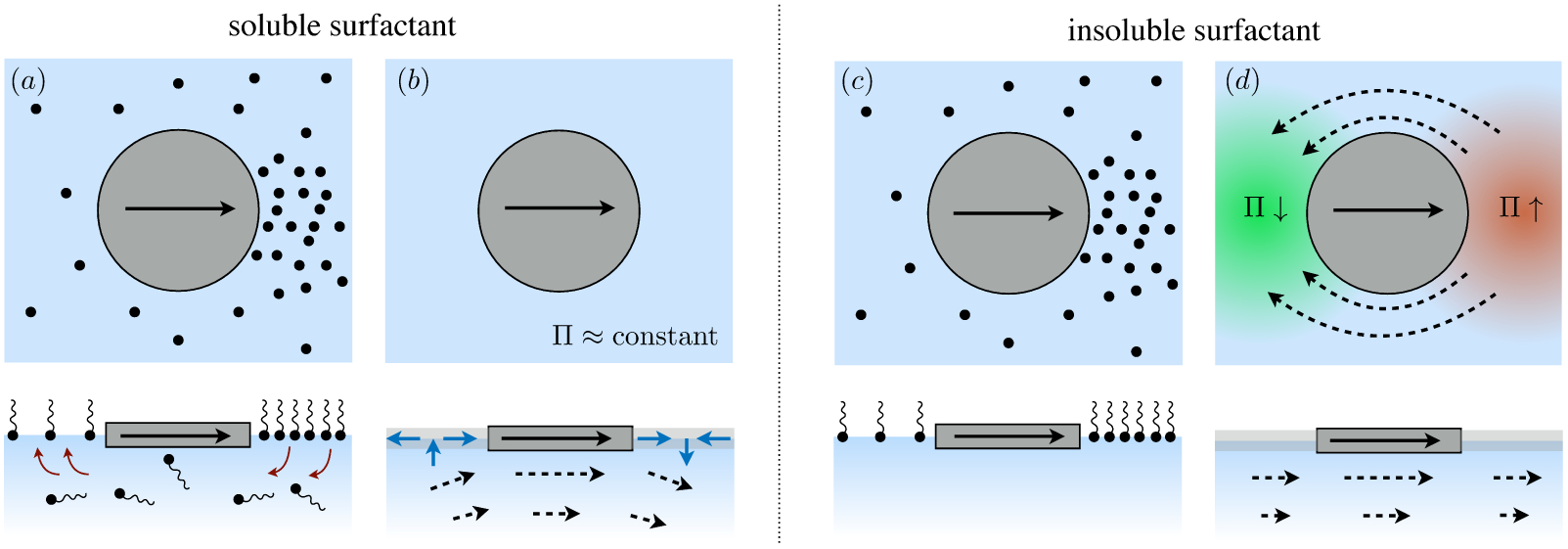Figure 11.

Illustration of surfactant-induced incompressibility. (a) Motion of a probe establishes a surface concentration gradient, shown in top and side views. In a soluble monolayer with instantaneous adsorption/desorption, surface concentration gradients are rapidly eliminated. (b) In this limit, ΔΠ ≈ 0 and reverse Marangoni flows are absent. The surface flow has a non-zero divergence ahead and behind the disk. Bulk fluid flow is indicated by the dashed arrows and is indistinguishable from that corresponding to a stress-free clean interface. (c) By contrast, if the surfactant is insoluble, a surface concentration gradient is sustained, and (d) the surface pressure difference ΔΠ generates a reverse Marangoni flow that resists interfacial compression/dilatation. The modified surface flow is divergence-free, which changes the bulk flow by constraining it to flow in planes parallel to the interface (see discussion).
